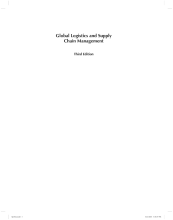Summary: Operational Excellence
- This + 400k other summaries
- A unique study and practice tool
- Never study anything twice again
- Get the grades you hope for
- 100% sure, 100% understanding
Read the summary and the most important questions on Operational excellence
-
1 Quality lessons
-
1.1 Quality management
This is a preview. There are 5 more flashcards available for chapter 1.1
Show more cards here -
What are the 5 approaches of quality?
- Transcendental approach: Quality is defined by image= subjective ( Maserati)
- Product-approach: Quality defined by characteristices of a product= measurable (Volvo)
- User-approach: Quality is defined by the customer expectation vs. His experience= Difficult to measure & quality = marketing instrument (Airline)
- Production oriented approach: quality defined by the scrap rate of the production process
- Value determination approach: Quality is determined by the price-quality ratio (Aldi) -
What is the difference between quality and reliability?
Quality is meeting the expectations of the customer at the purchase.
Reliability is meeting the expectation of the customer some time after the purchase ( time of usage) -
What are the 3 phases of striving for quality in an organisation?
1. Realize phase: Produce according to standard conditions (focus on product) Even though they might be different from customer expectation.
2. Internal phase: After you have obtained product quality, you must strive for process quality, strive for process control (technically, not organisational wise yet)
3. Integration phase: More attention to customer service, the quality within the organisation gets attention and the logistics dep. Gets a responsibility. Every worker gets the task of quality. -
What are the 5 aspects of Total quality control TQC?
1. Total quality control= Quality control concerns the whole organisation now
2. Quality policy= Put down the quality goals+ the road +means to reach the goals
3. Quality system= Anorganisational structure where responsibilities, procedures andprocesses are described.
4. Quality costs= Used to preventfailures
5. Qualityassurance = Acontinuously check, is written in quality plan. -
What are the primary and secondary processes?
Primary: Process that adds value to the organization
Secundary: Service activities that cost money ( finance, Hr,..) -> More and more being outsourced. -
What is the difference between driving and mastering?
Driving= the resonponsibility of top management -> Mission, vision, strategy, goals
Mastering= Responsibility of the operational level -> via PDCA circle reaching the goals with their team. -
Explain mission, vision, strategy and goals:
Mission : What are we standing for? (5 to 10 years)Vision : Where is our company going for (3 to 5 years )
Strategy: The action plan on how we will accomplish our dream(vision)
Goals: Determining tangible measurable results to check (SMART) -
What are the advantages of JIT?
- Lower stock costs
- Better flow of the production process
- Reduction of waste -
What is the meaning of Gemba Kaizen?
Gemba Kaizen is a Japanese concept of continuous improvement designed for enhancing processes and reducing waste. Within a lean context, Gemba simply refers to the place where value was created, while Kaizen relates to improvements. -
How do companies continuously improve their processes?
Through lean and mean production they improve efficiency. They do this via value stream mapping (VSM) to search for waste. They do this to not have overproduction, low stocks and no waste of time.
- Higher grades + faster learning
- Never study anything twice
- 100% sure, 100% understanding






























